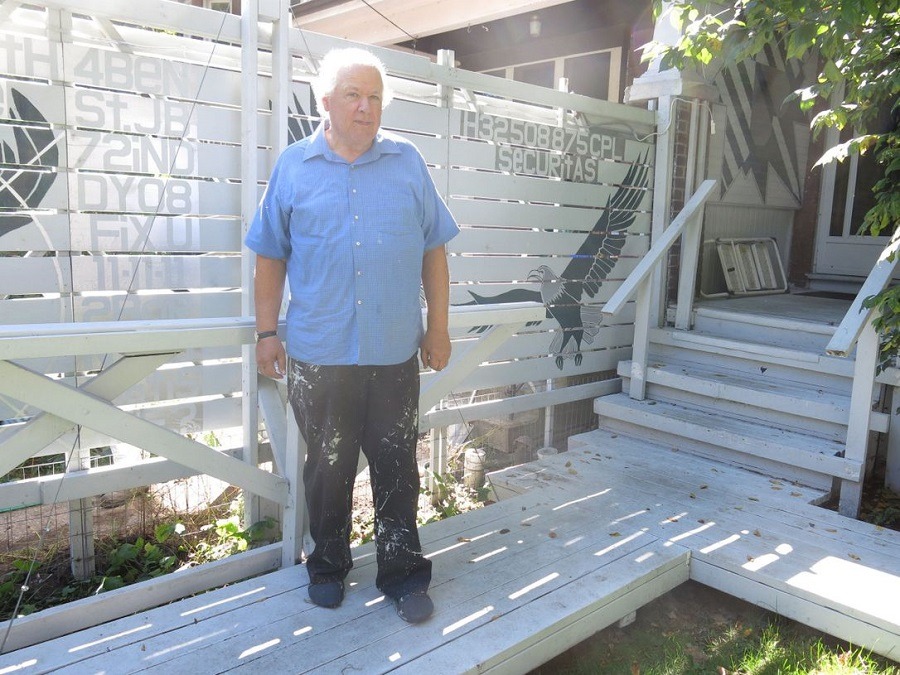VHA’s Cheryl Perera comments on hoarding challenge in Toronto


City slow to move on Beach cat hoarder
For years, the smell of cat feces wafting noxiously from a neighbour’s property in the Beach prevented Holly Sharpe and her family from enjoying something as simple as a backyard barbecue.
“You can’t eat in that environment — it’s sickening,’’ said Sharpe, referring to the property whose exterior was only recently cleared of debris and excrement by the city, which called the case one of “cat hoarding.”
Sharpe and many other neighbours — including retiree Neil Downey and his wife, Angela, who live in the brick semi attached to the hoarder’s house — phoned the city’s 311 help line for years, and got little in the way of results.
Downey, who said the ammonia smell from cat urine would seep through the walls and make their eyes water, got so fed up he stopped calling 311. The cats would also use his property and the neighbours’ as their litter box, he said.
Many neighbours have also expressed concern about the mental health of the property owner, who hasn’t been seen in weeks and is apparently not inside her house.
They got so worried that nothing was being done about the malnourished cats that they began trapping them in late September, catching most of the 50 felines when they left the house through open windows. Toronto Animal Services agreed to pick them up. (The OSPCA eventually trapped some inside.)
But neighbours are still wondering why they had to do the work.
“There are bylaws in place but enforcing these bylaws seems to be a challenge for the City of Toronto,’’ said Sue McCloskey, who lives across the street from the problem property.
Beach Councillor Mary-Margaret McMahon keenly feels the frustration and intends to do something about the issue.
On Tuesday she’s bringing a motion to council to set up a “hoarding co-ordination office’’ so the city can better deal with this problem.
“There’s a lot of red tape and it’s been frustrating. . . . I want to see if we can cut some of that red tape,’’ said McMahon, adding this was her first experience with hoarding. Residents brought it to her attention this summer.
While dealing with “vulnerable people’’ is not easy, McMahon said, what surprised her was the “lack of communication among some departments . . . that’s a waste of time and energy.’’
The city’s handling of hoarders has come up before.
Months after a September 2010 fire — started by a cigarette dropping on the cluttered balcony of a suspected hoarder — forced the evacuation of residents from 200 Wellesley St. E., the city’s Municipal Licensing and Standards branch issued a directive, effective April 1, 2011, telling its inspectors to contact Toronto Public Health if they encounter people living in “excessive clutter.’’
Since April 2011, the public health unit has received 393 calls or complaints related to hoarding but it does not record how many came from licensing inspectors, said public health spokesman Marco Vittiglio.
There could be even more calls related to hoarding but because they are recorded according to the nature of the complaint, like “bad odour,’’ there’s no way of knowing for sure, said Vittiglio.
McMahon has asked for a review of the city’s actions over the years specifically related to the Beach property.
It should be a thick file.
The recent cleaning of the exterior isn’t the first. The city had it done about 1½ to two years ago. The cat population then was reduced to two.
“However, it didn’t take long for the garbage to pile up again and for the cat population to grow,’’ said McCloskey.
Neighbours have praised Toronto Fire Services and police for answering complaints about the property over the years, but are less complimentary about the response from city departments.



